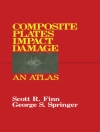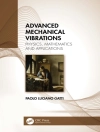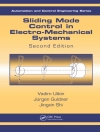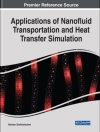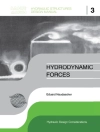This book brings together multiple aspects of the recent research conducted in the field of nanotechnology covering topics such as the synthesis of various nanoparticles, nanorods, graphene, graphene oxide-metal composites, characterization of these materials, and ample aspects of various applications including in heavy metal sensing, optoelectronic devices, gas sensing, solar cells, biomedical sensors, role in the drug delivery, and waste-water treatment. The book is of interest to early career researchers, who are trying to grasp multiple aspects of nanomaterials and nanocomposite synthesis and its potential applications.
विषयसूची
Advances in Synthesis and defect Properties of Halide Perovskite Nanoparticles: Experimental and Theoretical Perspectives.- Cost effective exfoliation synthesis of graphene.- Synthesis of graphene oxide and its metal composites.- Electrochemical synthesis of self stabilized metal-oxide and metal-hydroxide nanorods.- Structure and Stability of Modern Electrolytes in Nanoscale Confinements from Molecular Dynamics Perspective.- Preparations and biosensing applications of magnetic nanoparticles and their nanocomposites.- Synthesis and biomedical application of coinage metal nanoparticles and their composites.- Role of inorganic nanocomposite materials in drug delivery systems.- Bio-nanocomposite materials for Medical Applications.- Metal-oxide nanomaterials for gas sensing applications.- Synthesis of Metal nanowires and Their Application for Transparent Conductors.- Efficiency improvement in Cd Te based s This book brings together multiple aspects of the recent research conducted in the field of nanotechnology covering topics such as the synthesis of various nanoparticles, nanorods, graphene, graphene oxide-metal composites, characterization of these materials and ample aspects of various applications including in heavy metal sensing, optoelectronic devices, gas sensing, solar cells, biomedical sensors, role in the drug delivery, waste-water treatment. The book will be of interest to early career researchers, who are trying to grasp multiple aspects of nanomaterials and nanocomposite synthesis and its possible applications.olar cells with a few nm layer of Cu/Te.- Synthesis of quantum dots and its application in heavy metal sensing.- Synthesis of magnetic ferrite and Ti O2-based nanomaterials for photocatalytic water splitting applications.- Synthesis of metal oxide nanoparticles and its photocatalytic activity.- Bio-nanocomposites: a next generation food packaging materials.- Advanced nanocomposite electrodes for high performance supercapacitors.- Ceria based nanocomposites for versatile catalytic applications.
लेखक के बारे में
Imran Uddin is a Ph.D. in Biotechnology from National Chemical Laboratory, Pune, India. His research interest lies in fabrication of biocompatible nanostructures for nanobiosensor and flexible electronics. Moreover, he is also working on developing new industrially relevant renewable nanomaterials. He completed his postdoctoral fellowships from Rhodes University, South Africa, and Korea University, Seoul, Republic of Korea. He is a recipient of a number of awards and fellowships including CSIR-Pool Scientists; Start-up Research Grant (DST Young Scientists); CSIR-SRF; and ICAR-NET. He has published thirty-nine (39) research articles in peer-reviewed journals and two (2) book chapters.Irfan Ahmad is a Ph.D. in Physics from the University of Rochester, New York, USA. His research interests are in materials physics and nanotechnology for a broad range of applications in optoelectronic devices and sensors. He has served as a scientist at Alameda Applied Science Corp. (AASC), atech-startup in SF Bay Area, USA, for four years. He has served as the main and contributing scientist on multiple phase II (US $1M) US Department of Energy SBIR grants. Currently, he is an assistant professor at the School of Engineering Sciences and Technology (SEST), Jamia Hamdard (Deemed University), New Delhi. He is a recipient of Irish Ovshinsky Award from American Physical Society (APS) in 2011. His current h-index is 17, which includes citations from a Nobel laureate and institutions including MIT, Princeton, etc.


